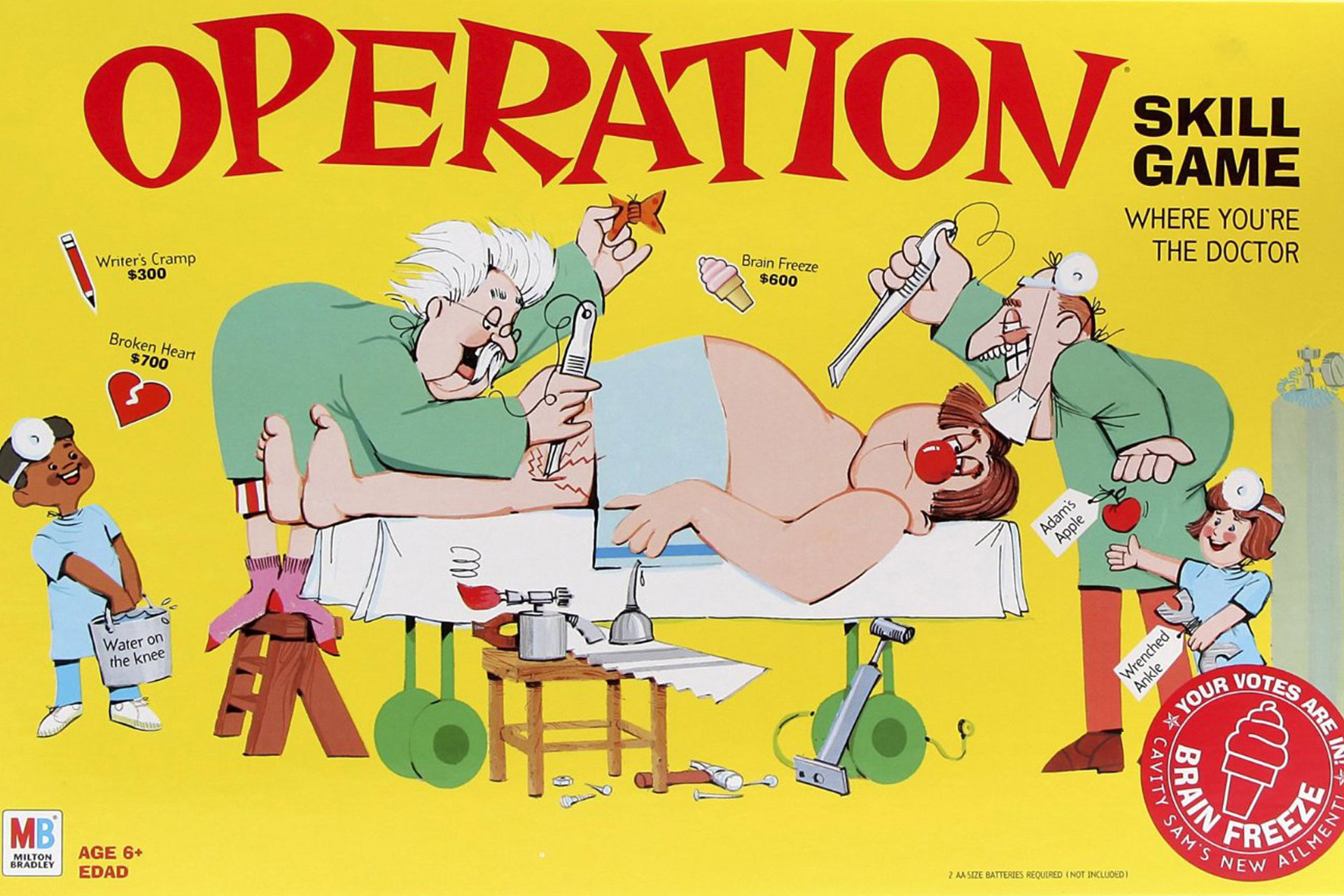How to Nurture and Sell a Great Idea
10 min read
Have you ever had a great idea fall short? It just feels wrong. Impossible. Implausible.
But have you ever wondered why it failed?
In our last post, we discussed four ways in which managers take a good idea and cause complete chaos. I want to help you stop the chaos and start creating product transformation.
I want to help you change the world (or at least your organization).
Today we’ll discuss a more positive approach to shepherding your ideas through the organization and on to the product roadmap. As we’ve thought about this process and where it goes wrong, we’ve pictured it as a path with four gaps (or chasms!) that need to be crossed. We’ve even given them names:
- Vision Gap
- Invention Gap
- Approval Gap
- Validation Gap
Keep reading to understand how to navigate these tricky gaps.
The Vision Gap
As we said in the last post, we all know that feeling of a great idea… “your adrenaline rises and your heart starts to race. You realize you know the answer to the hard question people in your organization have been asking—you can almost picture the full solution.”
Almost.
That is the tricky word here. What feels like almost is, in reality, not as close as you think to almost. Those sudden jolts of inspiration are like the old 80/20 rule; you feel like you’ve solved 80% of the problem but the last 20% is going to take 80% of the work.
So stop. Stop your inclination to run out and disrupt your team with a half-baked, half-brilliant, half-viable idea. Slow your heart rate down, take a few breaths, and really challenge yourself to clarify this vision.
You need to deal with the hard parts that don’t fit, or at least admit they’re there. This is also a great time to get one or two trusted colleagues to listen and give feedback—to find the holes you’ve overlooked in your excitement. Two friendly warnings:
- Make sure they know that this isn’t your new plan and you aren’t going to put it on the development calendar tomorrow. You’re having a future conversation.
- You have to listen neutrally. If you spend the whole time defending your idea you won’t actually hear their legitimate concerns.
The goal of this work is to admit there are difficulties, to understand what parts don’t connect, and to get more clarity on what your vision actually IS. You have to find the power of your idea in its simplest terms. Once you do that, think of a metaphor or story that your employees can connect with—something that makes your big, but vague, idea tangible.
You have to find the power of your idea in its simplest terms.
Lastly, find someone that can help you turn these concepts into visuals. It’s really the best way to communicate your vision into something digestible and actionable.
Action items for you:
- Float the idea to a few trusted colleagues
- Listen to their feedback without going on the defense
- Find the power of your idea in its simplest form
- Create a metaphor for your idea
- Turn the metaphor (your idea) into visuals that can help tell the story
Follow these five steps and you’ll be able to do a mic drop like this:

Well, maybe just a partial mic drop, you still have a lot of work to do.
The Invention Gap
All the hard work you did to cross the Vision Gap sets you up to have a conversation with your team—the real brain power. You need them for the parts of your idea that you don’t know how to accomplish, the parts where the technology is in question, the parts that are difficult to extend from your current products, and a whole slew of other things.
Just as you did before, you have to set the context of your conversation in the future. You’re not there to give a new direction, you’re merely seeking help crossing the Invention Gap. Your team has your answers, but to coax it out of them they need to know that you haven’t just pulled the pin on a calendar grenade, blowing up all the plans that already have them feeling overwhelmed.
Your goal is to uncover the next level of “holes” or details to turn your vision into a reality. As you do so, start developing a common language—even go as far as writing definitions on a whiteboard for everyone to agree on—to avoid confusion. This all becomes part of the story you tell [about your idea].
Although this practice can feel overwhelming and demoralizing, it’s so much better than the alternative. When a manager avoids this step by telling himself things like, “It will just scare them,” or, “It will stop productivity,” or, “I need them to stay focused,” it’s just a cop out because he’s worried his employees will say something that will make his idea DOA. But as you may remember from the previous post, pushing an unchallenged idea is exactly how chaos and disruption happens (because maybe that idea should be DOA, but a slightly altered version will change the course of an entire organization).
So we are calling BS for you: Avoiding the best people to answer the hardest questions to accomplish your brightest idea [ever] is going to come back to haunt you.
Action items for you:
- Use the brain power you have on your team
- Set the context of the conversation
- Don’t get discouraged
- Trust your team to work through the next layer of “holes” in your idea and brainstorm solutions
- Accept an altered vision
- Create a more detailed story, or enhanced metaphor, with a common language
The Approval Gap
The reality check from your team is hard to go through, but it’s your savior in this step. Being realistic about the challenges, from technical to roadmapping to integration, means you aren’t shooting in the dark on budgets, timelines, and critical paths—the very things that make your executive team’s ears perk up.
Which leads us to: how do you communicate your idea to executives?
For starters, you’re dealing with two very different groups when it comes to thinking and communication styles. In most cases, your staff wants data relationship diagrams, system maps, and task flows—they crave the details because they’re responsible for making it work.
The executives, on the other hand, want the vision from top-down. So you’ll need to go back to the story you’ve been crafting and remove the details your team so desperately needed; this group only cares about the “how” at a macro level. And you won’t even get to that part until you convince them that this needs to happen—that the “why” is worth it.
You’ll need to be a very, very good storyteller.
But words aren’t always enough to make it seem real; sometimes they can’t see it until they can see it. You’ll want to utilize the big picture visuals you created in the Vision Gap to help them fill in the grey areas. Tip: Don’t forget to make modifications to these as well (if needed), for your audience.
Action items for you:
- Return to your big picture state of mind—stay out of the technical details
- Reframe your story for a different audience and craft a convincing message around the “why”
- Review and make modifications (if needed) to the visuals you created in the Vision Gap
- Utilize visuals in your presentation
The Customer Gap
Coming up with a brilliant idea, working through the hard stuff with your team, and selling it to the executives are all major accomplishments. But knowing if you’re customers will find your concept useful is a whole different ball game.
Everyone knows the importance of getting to customers early and often (I mean seriously, everyone, even your mom), because it just makes more sense to know you’re building the road in the right direction before you lay 100 miles of concrete.
Despite this common-sense knowledge, we’ve seen time and again that people fail to ask non-leading questions and are unable to dissect answers in a way to hear underlying motives, rather than just surface level wants. If you just go out looking for confirmation, you’re sure to find the answers you’re looking for, rather than the answers you need. We’ve literally been on some customer visits where the purpose could be expressed as, “to find out if the customer thinks my idea is a ten or an eleven on a ten-point scale.” Unfortunately, egos don’t make for good research.
Our advice to you: do some research on research. Here are some easy reads from industry experts:
Think of this as a crash course to get you started. Like most things, good research takes practice. A customer visit is part anthropology, part psychology, part sociology, and part clairvoyance. So like I said, practice.
It’s also important that everyone is clear on the purpose of the visit. In this case, you’re just looking for directional signs—are we on the right track? How do we move this idea forward, if it’s legitimate?
Spend the time and money to get this right. It will come at a fraction of the cost of getting it wrong.
Action items for you:
- Check your ego at the door when you visit customers—you have to be open to your idea failing, even after the blood, sweat, and tears you’ve invested
- Do your research and learn how to conduct better, unbiased user interviews
- Practice your interview skills
- Make sure the purpose of your visit is clear to the entire team
In conclusion
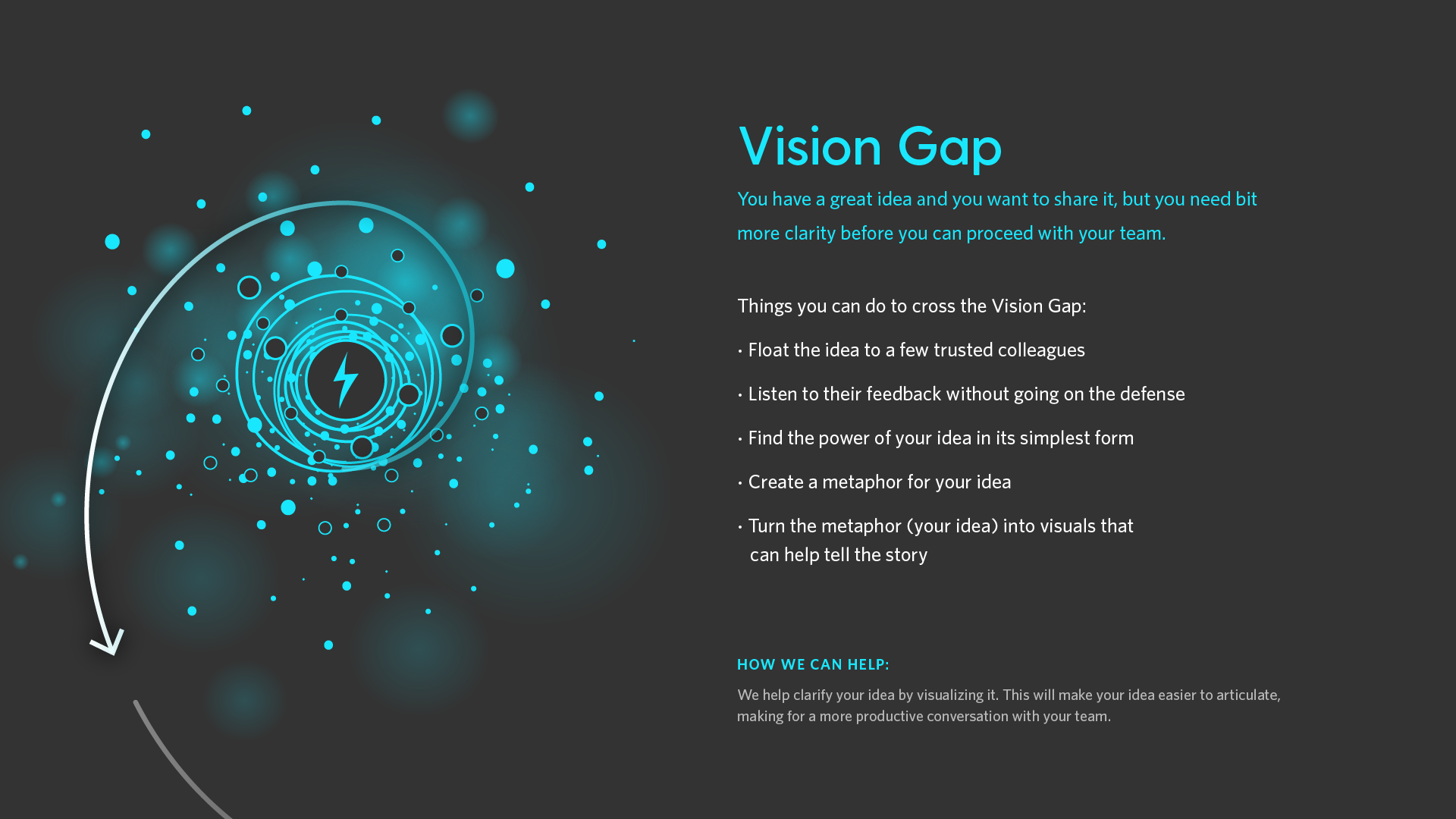
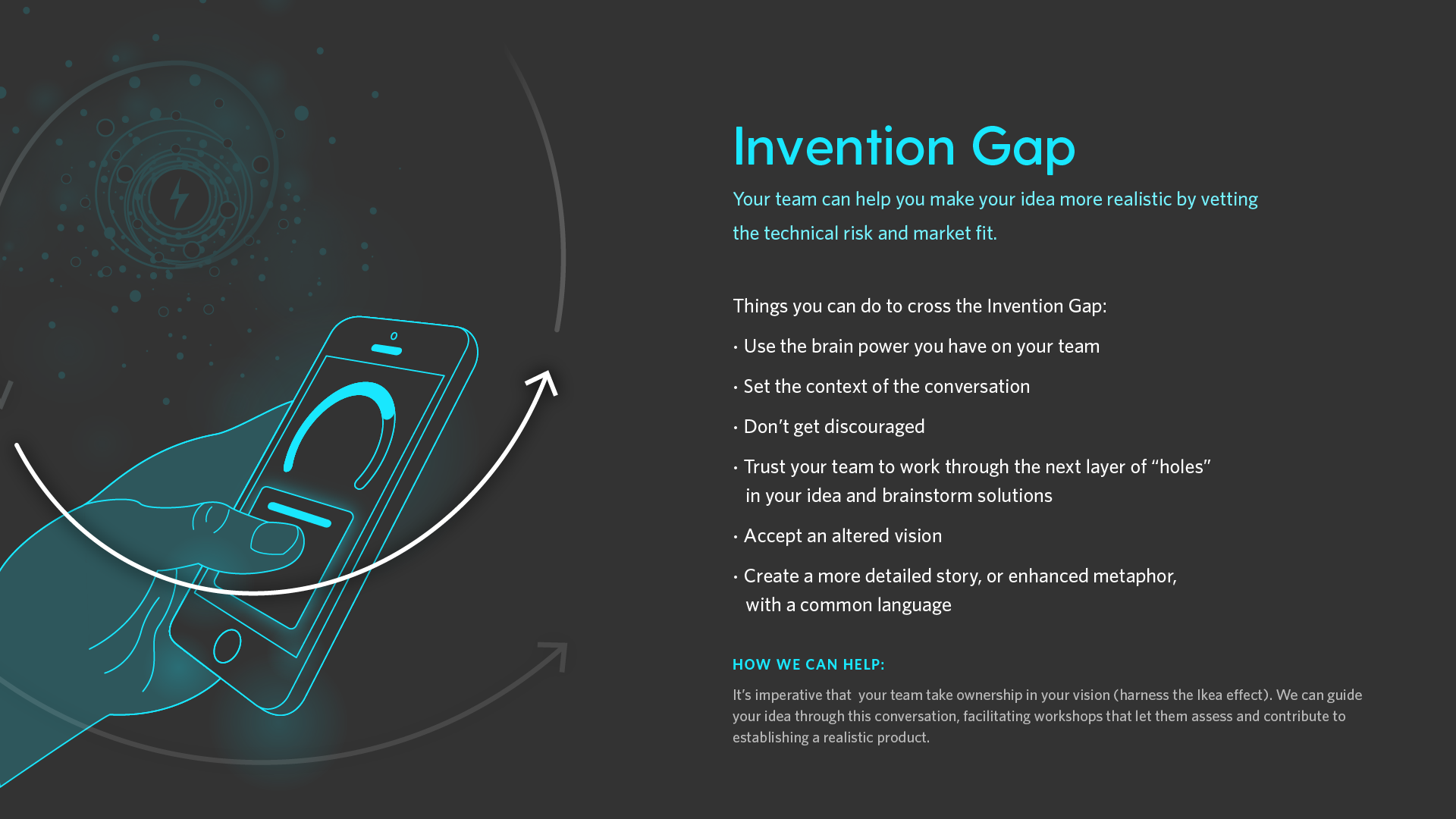
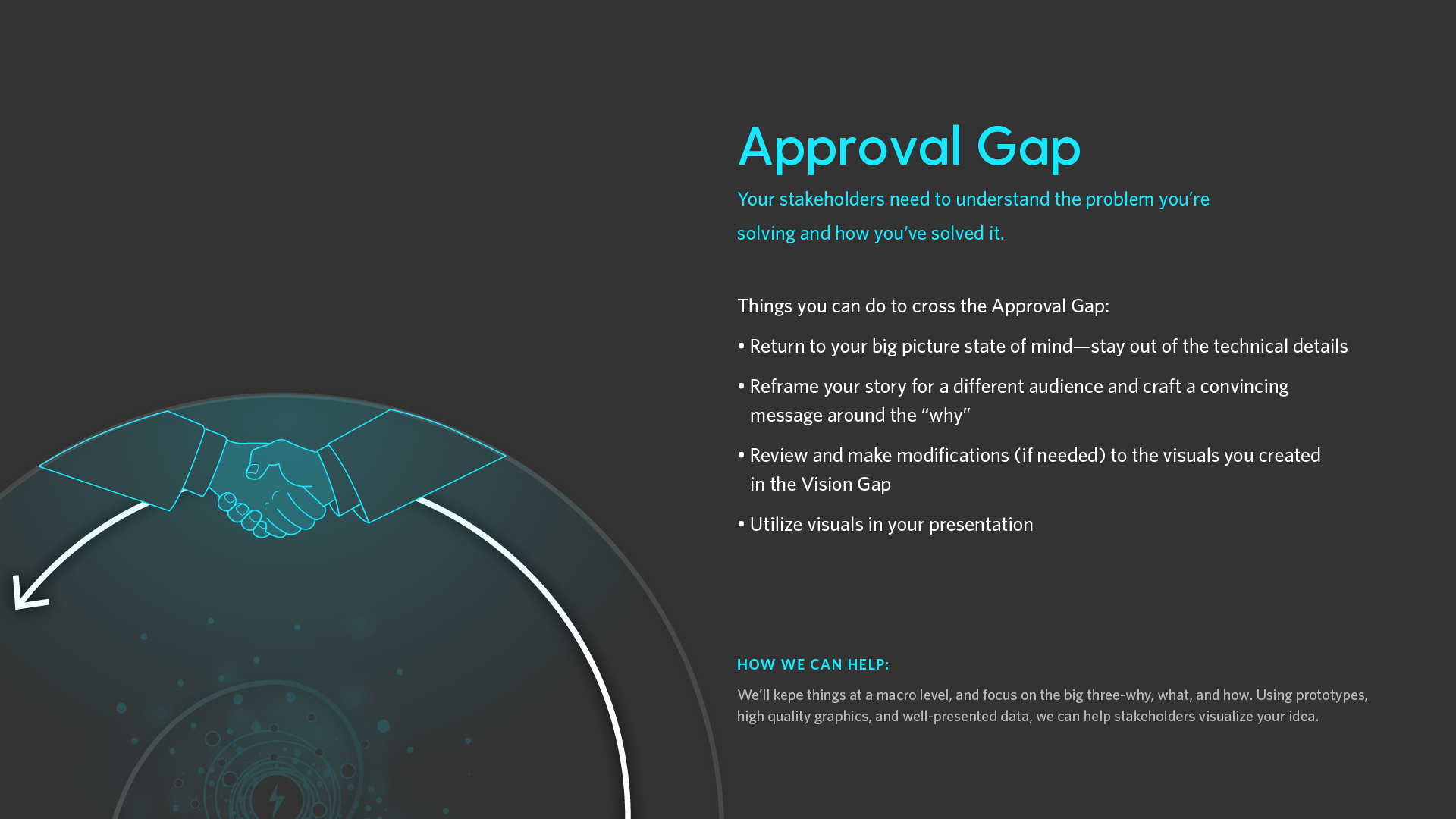
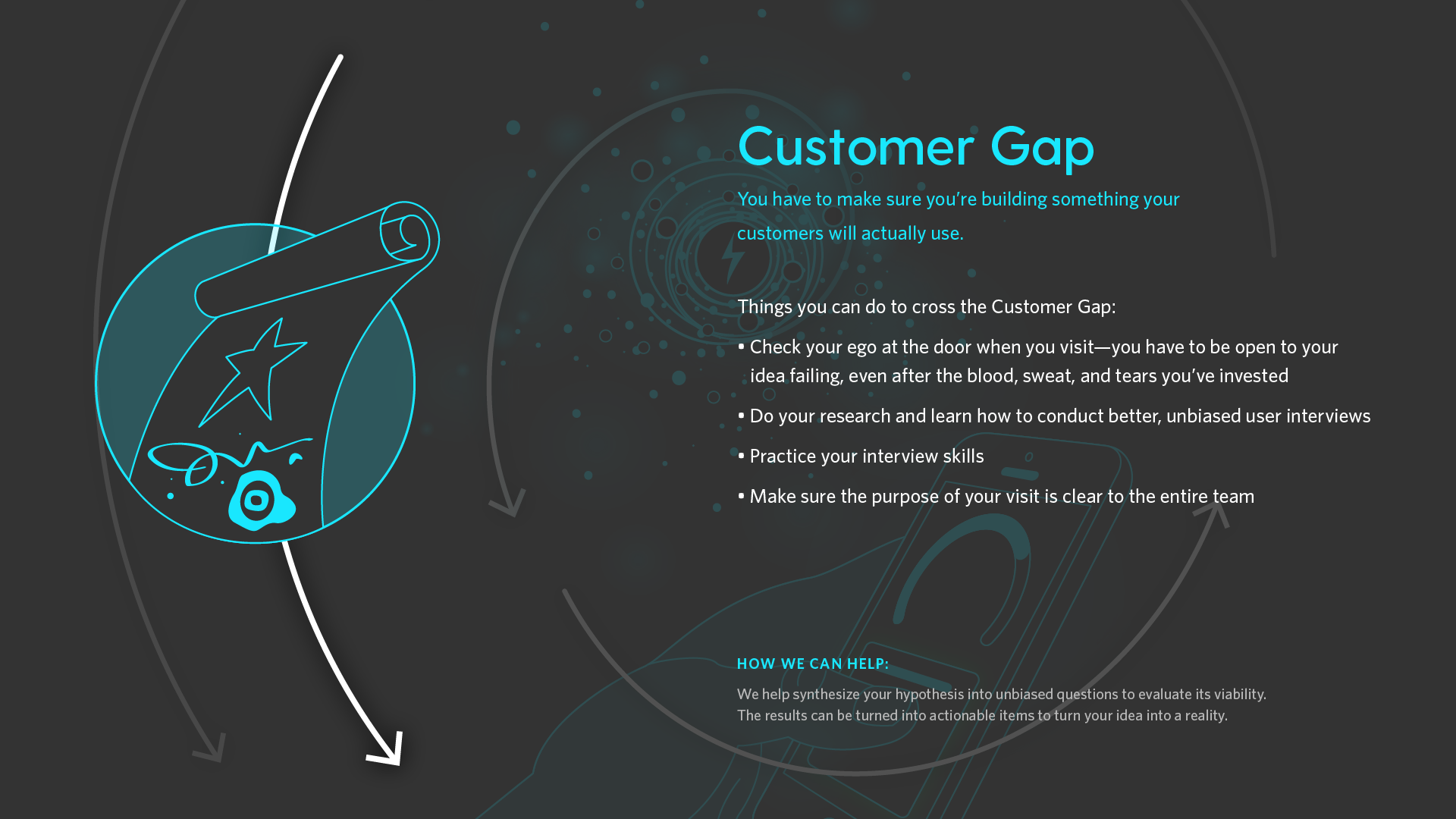
Looking at the size of these four gaps, it’s no wonder getting a great idea into the production cycle is so hard. The key is to slow down, understand what you’re trying to accomplish, tailor your communication to your audience, and create a story [together] that your team and executives can rally around.
You’ll be amazed at what the Ikea effect can do for you—when people build this idea with you, they’ll place more value on it and take ownership in the solution. What better way to get something really hard accomplished?


